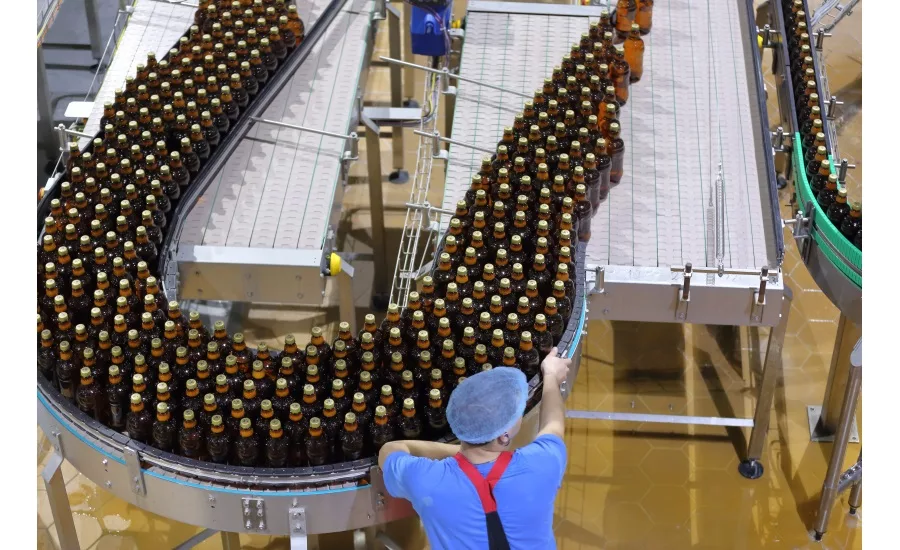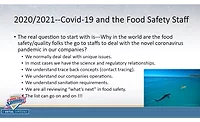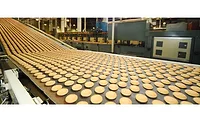Digital transformation and the workforce in a post-COVID-19 world

Few events in recent memory have had the seismic impact of COVID-19. Around the world, businesses have had to implement work-from-home or social-distancing measures—or to even cease operations temporarily. Among friends and families, social engagements have been limited to video calls. Meanwhile, there are entire industries—from retail to travel—now facing major upheaval.
Even amidst these disruptions, however, the food industry carries on. After all, food producers and manufacturers have the important role of providing essential goods to stock warehouses and grocery stores throughout our communities, with some plants working around the clock to keep supply up to meet demand. Yet while the lights remain on inside most production sites, food manufacturing has not been immune to the changes brought on by COVID-19.
Namely, we’re seeing manufacturers across the industry make significant—albeit necessary—changes to their operations to protect plant-floor employees, including:
- Limiting the number of workers per shift to make it easier to follow social distancing recommendations from the FDA.
- Encouraging employees to work from home if their role doesn’t require them being on the plant floor (e.g., quality professionals or plant-level quality managers).
- Allowing regular hand-washing breaks, as well as time dedicated each day for facility-wide disinfecting and cleaning.
- Introducing temperature testing of employees before they enter plants.
Together, these measures have resulted in manufacturers having to manage with reduced onsite workforces and—for some, for the first time—remote employees, during a time when maintaining optimal productivity, quality, and safety are of the highest priority. Lacking the tools for connectivity and data accessibility between those on the plant floor and at home, many must now confront something they have long stalled: digital transformation.
A catalyst for digital transformation
It’s not that food manufacturers have failed to adopt technology. Quite the contrary—a good number have implemented solutions like process automation and control to automate the physical aspect of the production process. However, continued use of legacy systems and manual data collection processes, particularly at the individual plant level, have inhibited the fast and broad access to information necessary for an effective quality and safety program.
For some organizations, the problem is their food quality and safety programs consist of disparate on-premise systems, which would be practically impossible for remote workers to access from home. Then there are facilities where quality is managed through large sets of spreadsheets manually updated by quality and plant managers. These are filled with historical data that are rarely reviewed until it’s too late to take corrective action. Or worse, there are those that still rely on paper checklists, where collected information is neither readily accessible nor actionable by any means.
Given the current situation, it’s become imperative for food manufacturers to consider innovative ways to enable data accessibility across their geographically dispersed workforces and accelerate the digital transformation of their manufacturing operations. An ideal solution that can address this present need quickly and provide lasting value long after the world recovers is cloud-based quality management. Notably, such software solutions provide a way to centralize and standardize quality data, making it available in real time to support workers at all levels of the enterprise.
Looking for quick answers on food safety topics?
Try Ask FSM, our new smart AI search tool.
Ask FSM →
For plant-floor operators who may be stretched thin due to reduced onsite workforces, scalable cloud-based solutions offer the ability to automate routine activities such as data collection, process monitoring, and reporting so they can keep up with critical quality and safety checks. If an operator is working a different shift or covering an unfamiliar operational area, role-based dashboards and guided data collection can help them to see required tasks and checks to ensure everything gets done even with a limited workforce. These solutions can also include automated alerts, delivered remotely, to plant-floor issues and ensure that corrective actions are taken proactively to prevent material impacts on performance or quality.
Importantly, centralized data collected in a single and secure repository makes timely quality information available to everyone, anywhere, and from any device, including offsite quality managers, plant managers, and executives. Through the cloud and a web-based interface, quality and plant managers can conduct remote monitoring and analysis and continue to observe performance trends and make quick, accurate decisions to prevent larger issues from manifesting. When standardized across multiple lines and sites, these solutions can even enable company leaders to run cross-plant analyses to identify opportunities for when and where to adjust operations and align best practices across the entire enterprise, all safely from home.
Ultimately, cloud-based quality management supports the digital transformation of plant operations, creating more nimble, flexible, and proactive manufacturing environments—driven by data. In these new environments, workers can intelligently understand, respond, and optimize the food production process in real time. Such capabilities will not only prove essential to upholding quality and safety standards during the pandemic, but also change the very nature of manufacturing work in its wake.
The post-COVID-19 workforce
A handful of countries and cities are already looking at plans of reopening and a return to normalcy. But for workers in the digitally transformed production plant, there likely won’t be a return to the manufacturing of yesterday. Instead, they will see their jobs evolve from “blue-collar” work to what can be categorized as “white-collar” work. So, rather than spending their shifts performing routine, labor-intensive tasks, their days will be dedicated to analyzing data and working with technologies to continuously improve quality, process performance, and food safety measures. In effect, they’ll assume the role of knowledge workers. This is a trend that was already picking up pace before the crisis, however, in a post-COVID-19 world, that pace will quicken with a much greater sense of urgency.
An open opportunity
Even as I write this, there are a growing number of food production sites unfortunately closing their doors due to cases of employees testing positive for COVID-19. It can be a difficult time for such facilities to even think about digital transformation initiatives when they just want to get their production lines up and running again. But, actually, downtime doesn’t have to be unproductive time—and it might be an open opportunity to think about innovation.
One of the main challenges with digital transformation is that leaders are too busy managing day-to-day operations that they can’t devote enough time and attention to get projects off the ground. Yet many of these projects can be researched, planned, and initiated remotely.
Working from home, quality managers and business leaders can connect virtually to consider the following questions:
- What do we need to know to improve our production processes that we don’t know now?
- How can we better understand the variables that affect the quality and performance of our processes?
- What data do we need to guide our understanding?
- What solutions exist that could help?
By thinking through these questions, organizations can set the wheels in motion for cloud-based quality management and digital transformation, readying their plants for when operations can resume in the near future.








